Guide E-327
Danise Coon and Stephanie Walker
College of Agricultural, Consumer and Environmental Sciences, New Mexico State University
Authors: Respectively, Senior Research Specialist, Chile Pepper Institute/Department of Plant and Environmental Sciences; and Extension Vegetable Specialist, Department of Extension Plant Sciences, New Mexico State University. (Print friendly PDF)
Chile Traditions In New Mexico
From mid-September until frost, green chile matures and turns deep red. New Mexicans have traditionally harvested and strung red chile into colorful arrangements called ristras. The chile is allowed to dry in New Mexico’s warm sun, and then is stored—still on the ristra string—for use in various traditional food dishes during the winter. The ristra is also a symbol of welcome and hospitality.
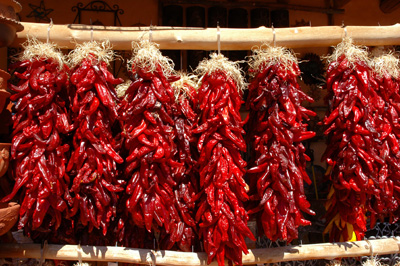
© Sally Scott | Dreamstime.com
How To Make A Chile Ristra
Green chile is not acceptable for making ristras. Because it has not reached maturity, green chile will only shrivel and turn a dull orange color as it dries. Selecting the proper type of chile (or cultivar) is also a critical consideration when making a ristra. Many modern New Mexican-type chile cultivars have been bred for thick fruit walls. While this attribute provides for optimal green chile use, the fruit do not readily dry, or may deteriorate rather than dry, when hung on a ristra. The New Mexican-type cultivars ‘New Mexico 6-4’, a mildly pungent cultivar, and ‘Sandia’, a hot cultivar, are commonly used in ristras because of their superior drying characteristics.
Select pods that are mature but still fresh, red, free of blemishes, and straight with pliable stems. For a full-size ristra made with New Mexican pod types, you will need approximately 130 pods for a 2-foot ristra. For a mini ristra made with de Árbol type pods, you will need approximately 800 pods for a 1-foot ristra.
Two-Foot New Mexican Pod Type Ristra
Start with a 5-foot double strand of a durable, heavy twine or string, like baling twine. Hang the double strand from a sturdy area like a rafter or hook. From the top of the double strand, measure down 3 feet and tie both strands together in a knot, allowing the extra 2 feet of twine to hang below. This method allows you to start from the bottom of the ristra and work your way up.
Using three pods at a time, place the stems in between the double strands on top of the knot that was made at the 3-foot mark. Using the extra 2 feet of twine below the knot, tie a half-hitch or overhand knot to secure the three stems to the double strand of twine above the knot (Figure 1). Then tie another half-hitch knot to doubly secure the pods; this will ensure a tight, secure ristra (Figure 2). Keep adding pods in this same manner three or four at a time to fill in and make a nice, full ristra, making sure to secure with two half-hitch knots each time. If you run out of loose tying strands, you will need to add another section of twine to your tying end; just cut another 2-foot strand and tie it to the current tying strand. After all pods are secured, tie off the top and make a 2- or 3-inch loop that will hang your ristra.
If using whole cornhusks for the topper, fray or comb through the cornhusks to separate. Then at the halfway point of the husk, tie the frayed husk to the top of your ristra, allowing the husk to fan out over the top of the ristra. The cornhusk top will hide the loop that hangs your ristra.
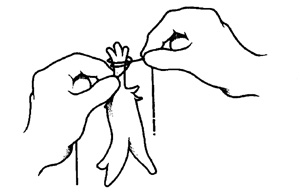
Figure 1. Tie a half-hitch or overhand knot to secure the pods to the main double strand.
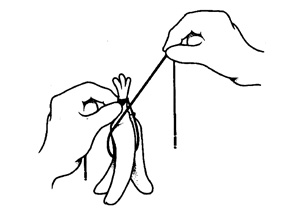
Figure 2. Tie a second half-hitch or overhand knot to ensure a tight, secure ristra.
Twelve-Inch Mini Ristra
Start your mini ristra by making small bundles of pods with 15–20 pods per bundle. Put the pods together by the stems and tie them securely with a rubber band or piece of string (Figure 3). After you have secured 30–40 bundles of pods, hang a 3-foot double strand of heavy twine from a secure hook or rafter. At the 1.5-foot mark on the double strand of twine, tie the strands together in a knot and allow the remaining 1.5 feet to hang below. This is the same general method as described previously for working your way from the bottom of the ristra to the top. Start by placing one of the bundles above the knot in between the doubled strands. Use the 1.5-foot length of twine below the knot and tie a half-hitch to secure the bundle; keep adding bundles and tying knots until you have the length of ristra desired (Figure 4). Add frayed cornhusks to the top for effect.

Figure 3. Use a rubber band or piece of string to make bundles of 15–20 pods.
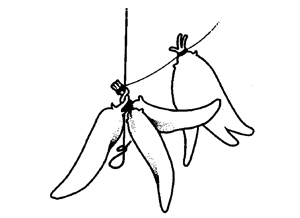
Figure 4. Tie pod bundles to the main double strand using half-hitch or overhand knots.
How To Make Red Chile Sauce
Red chile salsa (sauce) can be made from dried red chile pods. Select dry chile pods in optimal condition. Do not use pods with signs of mold, insect infestation, disease, or decay. You can use chile pods from ristras; however, if the pods have been sprayed with plastic, shellac or insecticide, they are not edible and should be used for decorative purposes only.
Remove stems and seeds from chile pods. Twelve to 14 large chile pods yield about 1 pint of chile purée. Wash pods in warm water, lifting them out of the water and changing the water several times.
Place washed chile pods in a 5-quart saucepan and cover with boiling water for 30 minutes to allow pods to rehydrate and soften. Pulp should be soft and should separate easily from the skin. Place hydrated chile pods with enough fresh hot water in a blender to process into a smooth purée. Purée can be passed through a sieve or colander to remove any unwanted bits of peel. Purée should be simmered for 10 minutes before further use or storage.
Red Chile Enchilada Sauce Recipe
1 cup chile purée
1 cup water
1 minced garlic clove (optional)
1/2 teaspoon salt
2 tablespoons vegetable oil
1/2 teaspoon crushed dried Mexican oregano leaves (optional)
In a saucepan, mix chile purée, water, garlic, salt, and oil. Simmer gently for 10 minutes, stirring frequently. Add oregano and simmer another 5–7 minutes. This recipe will yield 2 cups of sauce, which should be enough to cover 12 tortillas for enchiladas. Leftover sauce or purée must be refrigerated promptly and can be used or frozen within 3 days. This sauce can also be used in many other typical New Mexican food recipes.
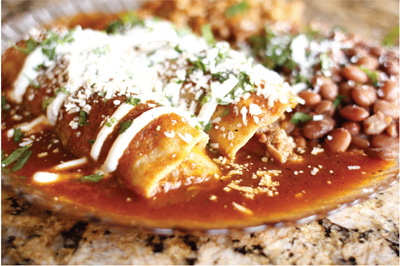
©Peter Kim | Dreamstime.com
Acknowledgment
The authors thank Jimmy Lytle and Margarito Guerrero of the Hatch Chile Express for providing their ristra-making expertise.
For more on this topic, see the following publications:
E-323: Salsa Recipes for Canning
https://pubs.nmsu.edu/_e/E-323/
E-322: Drying Foods
https://pubs.nmsu.edu/_e/E322/
H-236: Postharvest Handling of Dehydrated Chiles
https://pubs.nmsu.edu/_h/H236/
All Food & Nutrition Publications:
https://pubs.nmsu.edu/_e/
Original authors: James R. Sais, Extension Horticulturist; and Priscilla Grijalva, Extension Food and Nutrition Specialist.

Danise Coon is the Senior Research Specialist for the NMSU Chile Breeding Program. She earned her M.S. at New Mexico State University. Her research focuses on chile pepper cultivar development, development of disease-resistant chile pepper cultivars, and development of chile pepper cultivars that will help New Mexico’s industry thrive in an ever-changing market.
To find more resources for your business, home, or family, visit the College of Agricultural, Consumer and Environmental Sciences on the World Wide Web at pubs.nmsu.edu
Contents of publications may be freely reproduced for educational purposes. All other rights reserved. For permission to use publications for other purposes, contact pubs@nmsu.edu or the authors listed on the publication.
New Mexico State University is an equal opportunity/affirmative action employer and educator. NMSU and the U.S. Department of Agriculture cooperating.
Revised July 2015


